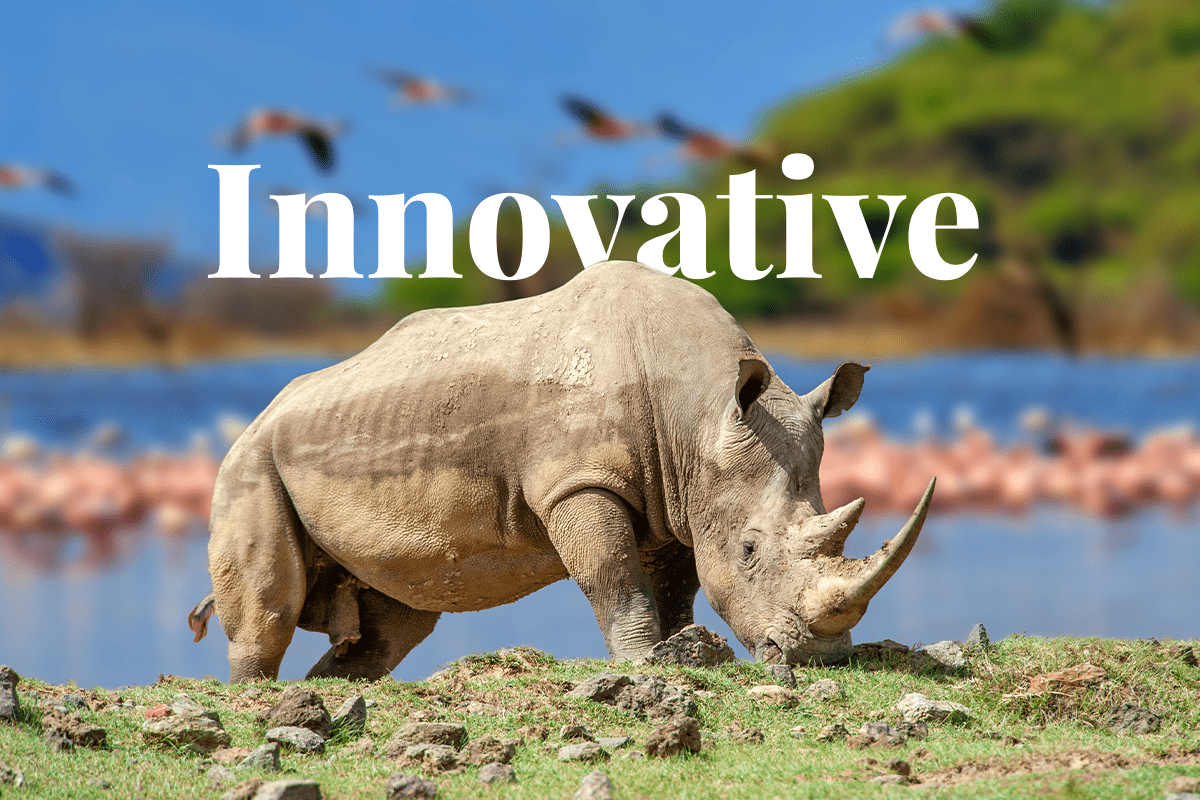Biodiversity is a crucial component of our planet's natural systems, but its protection has often been overlooked. However, the concept of biodiversity credits is starting to change this. Biodiversity credits are a new way to finance conservation efforts while benefiting local communities and biodiversity custodians. This article will discuss the key considerations for a successful biodiversity credit system, including the importance of accounting for ecosystem diversity, utilising multivariate approaches, ensuring long-term financial security and legal guarantees for projects, and differentiating between preservation and restoration activities.
 Rhino on a background of pink flamingos, Kenya.
Rhino on a background of pink flamingos, Kenya.
Accounting for ecosystem diversity
One of the main considerations for a successful biodiversity credit system is accounting for the diversity of ecosystems globally and considering recovery dynamics. Ecosystems vary in recovery dynamics, with some regenerating rapidly, such as humid tropical forests, while others, such as boreal forests, can take decades.
Therefore, it is crucial that a biodiversity credit system recognises these differences and can normalise different management interventions and sites based on criteria that represent global ecological significance. For example, the International Union for Conservation of Nature’s (IUCN) Red List of Ecosystems as a global standard for assessing risks or the Australian government's habitat hectares approach.
Read more: Why is biodiversity important?
Utilising multivariate approaches
Measuring ecological outcomes related to biodiversity conservation or recovery requires analysing different types of indicators that speak to ecosystem structure, composition, and function. Ecological outcomes must inform ecosystem integrity, unlike measuring just biomass to determine carbon stocks and removals.
Therefore, biodiversity credit standards must use multivariate approaches and metrics in their monitoring and reporting schemes, which will be influenced by the ecosystem and project size. Rather than being too prescriptive, methodologies, whereby appropriate metrics are validated for the specific system, are better. Creating a methodology that can withstand critique and adapt over time is critical. A healthy biodiversity market must find the right balance between accuracy and simplicity.
Read more: Biodiversity reporting: Why corporates must take a quantitative approach
Ensuring long-term financial security and legal guarantees
Biodiversity conservation and restoration processes are directly related to people's everyday decisions. In many biodiversity hotspots globally, these processes are inherently linked to the will of biodiversity custodians and their land tenure. Hence, biodiversity credits will be intimately linked to the people, the communities, and their land tenure and titles.
The ability of biodiversity credits to contribute to the 30x30 Global Biodiversity Framework goals and long-term biodiversity outcomes is also related to the financial needs of potential stakeholders involved, which must be underwritten by long-term financial security and legal guarantees. Long-term financial security can include a functional credit market, endowments, or insurance schemes. Legal guarantees can include land titles and contracts or formal protection status, enabling long-term stewardship and the durability and permanence of biodiversity projects.
Differentiating between preservation and restoration activities
Achieving the Global Biodiversity Framework targets requires that both the preservation and restoration of natural ecosystems are eligible crediting activities. Preservation is more valuable from an ecological perspective and is inherently cheaper than restoration activities.
If these activities are not differentiated, the sale of credits from restoration outcomes may be at risk, as funding will likely flow to the cheaper preservation projects. Differentiating activities will allow for 30x30 restoration targets to be aligned and the value realised by buyers. The ecological value of distinct conservation credits might increase their market value, equalising costs slightly.
The importance of biodiversity credits for conservation
Biodiversity markets can potentially transform how we approach conservation by creating a financial incentive for protecting and restoring natural ecosystems. By providing measurable ecological outcomes, long-term certainty to investors and biodiversity custodians, and meaningful time horizons for conservation outcomes, biodiversity credits can help to accelerate funding for biodiversity conservation.
To create an effective framework for biodiversity credits, we must consider the unique challenges and opportunities biodiversity conservation presents. These include accounting for the diversity of ecosystems, utilising multivariate approaches and metrics, considering nature and local community dynamics, representing meaningful time horizons, linking biodiversity credits to people and communities, and differentiating between preservation and restoration.
 Woman goes along the shore of water with bucket on her head, Africa.
Woman goes along the shore of water with bucket on her head, Africa.
Compensate for your impact on biodiversity
Creating a flourishing biodiversity market will require collaboration between stakeholders, including landowners and stewards, project developers and managers, investors, registries, buyers, and sellers. By aligning interests and creating protocols and standards that promote compensation for conservation outcomes, we can ensure that biodiversity markets promote sustainable development that balances economic, social, and environmental functionality.
In conclusion, biodiversity markets present a unique opportunity to accelerate funding for biodiversity conservation while providing a financial incentive for protecting and restoring natural ecosystems. By creating a framework tailored to the unique challenges and opportunities presented by biodiversity conservation, we can harness the power of the market to create a sustainable future for our planet.
At DGB Group, we believe investment in nature-based solutions is the optimal path to protect and restore nature. Therefore, we design and manage large-scale reforestation and afforestation projects that restore biodiversity and degraded land and help communities with sustainable development. Businesses, investors, and individuals can choose among our solutions and support nature in the most accessible and transparent way.
Explore the benefits of green investing


